Native Plant Garden
Previously...
Over the last few years, we've been trying to reduce the amount of lawn on our small quarter acre property and replace it with native plants, plants for polinators and birds, as well as expanding our vegetable and fruit gardens. This has included a 12ft wide strip of native plants along the street, and our raised veggie beds in the front yard. In 2021, we talked to a few landscape designers (who didn't specialize in native plants) to look at getting a whole plan for the middle part of our back yard, but ended up not liking the plans we got back. I ended up hiring a local mason to build a flagstone patio where we wanted it, putting off the native plants until this year.
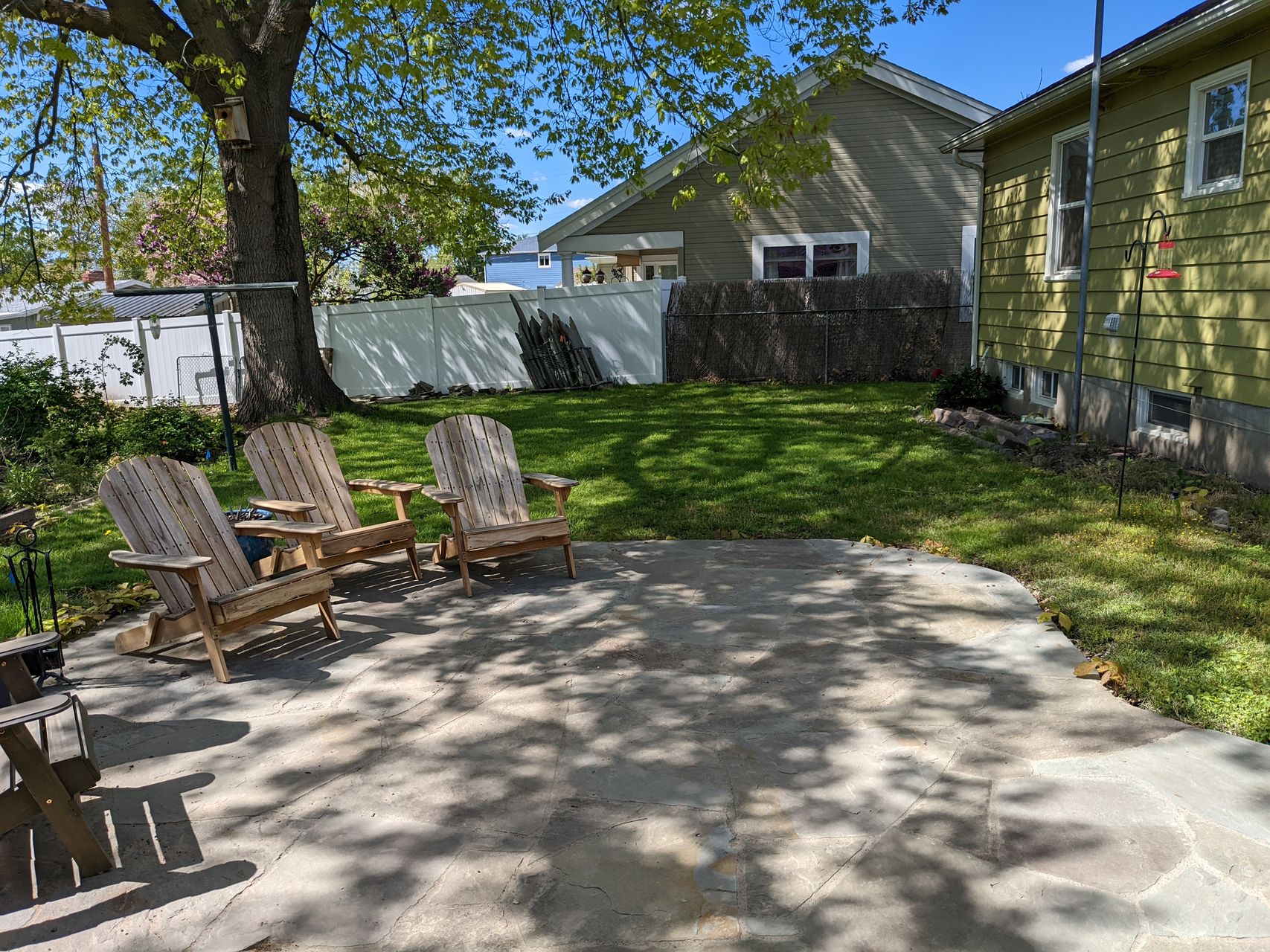
Plan
For planting a large area (~60 feet by ~30ft), we were going to need a lot of plants, and we wanted to consult with someone before spending a lot of money on plants. Early in 2022, my spouse found Tapteal Native Plants (website | instagram), a nursery that specializes in natives of the Inland Northwest, as well as consulting and design for projects like ours. Tapteal is located in the Tri-Cities, about an hour away from Walla Walla, so the owner, Ann, hopped over one afternoon in the early spring to look at our lot, talked with us about what we were trying to do, and sent us back a plan. Her rates were extremely reasonable, and I would highly recommend her for anyone in the area trying to do something similar. Finally, we were able to order all the plants from Tapteal Native Plants for planting in the fall, before the rains would start in the fall and help get them established before next year's summer.
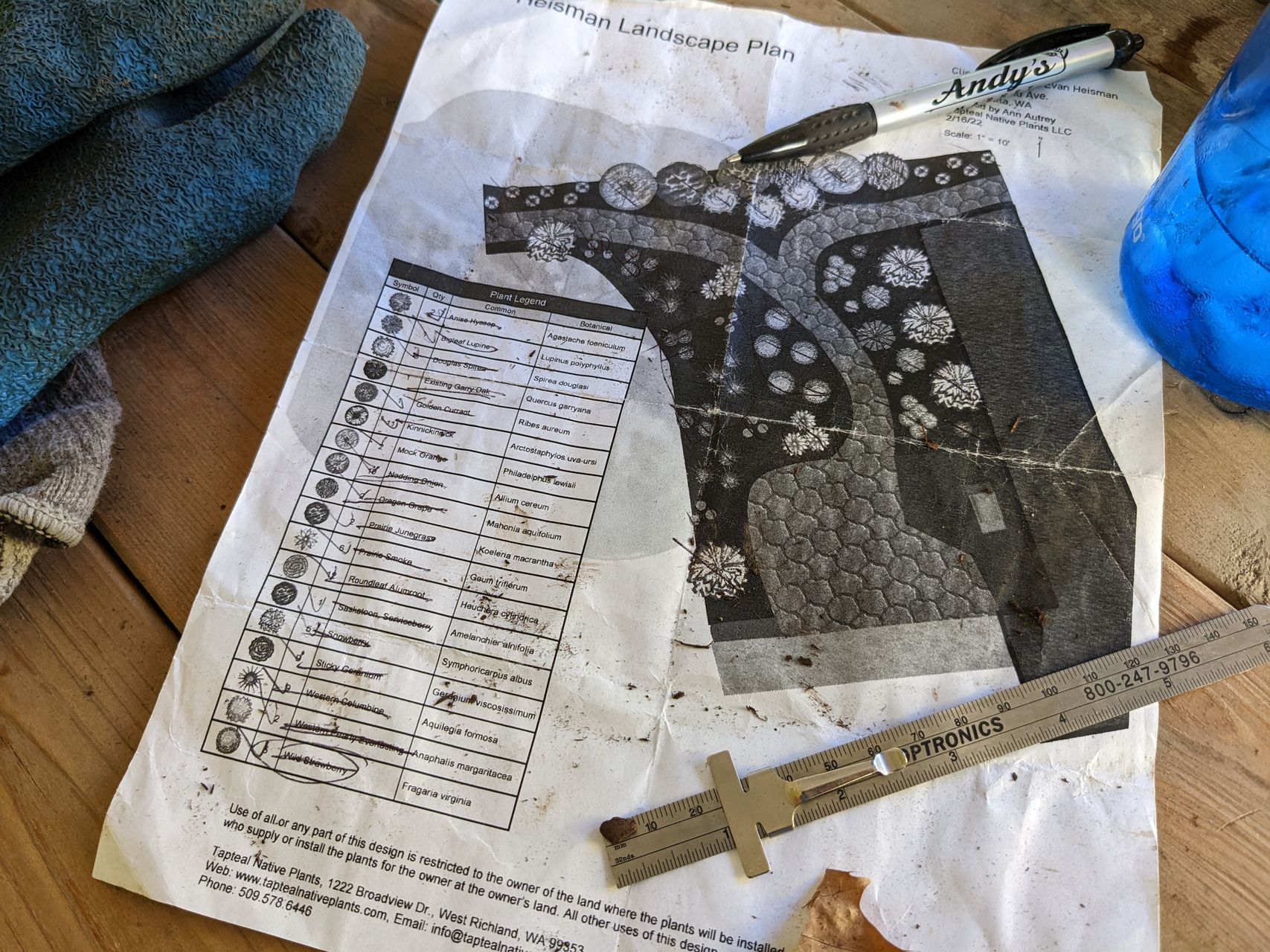 The plan as printed and being refered to while putting plants in the ground.
The plan as printed and being refered to while putting plants in the ground.
Preparation
The biggest bit of work for this project was going to be removing the grass! I was initially planning to do this myself by renting a sod ripper and trading some labor with a few friends to get it done. Unfortunately, the price of equipment rentals shot up since I had last looked, and several things came up this summer that prevented me from getting to it. Between the rental costs and time required, we ended up hiring a contractor to remove the grass and put down some mulch. The other driving factor for this was disposing of the sod was going to be expensive as our local landfill charges more for dirt than general compostable debris.
Always, always, always, get a second or third bid folks! I went with the first landscaper to get back to me and he was a nightmare to work with, and expensive. I had marked out and flagged where the path would go to avoid putting mulch there, and the contractor completely ignored for putting down mulch, failed to provide risers for a few of the sprinklers that I had to locate and recap, and didn't remove a couple of metal poles for a clothesline.
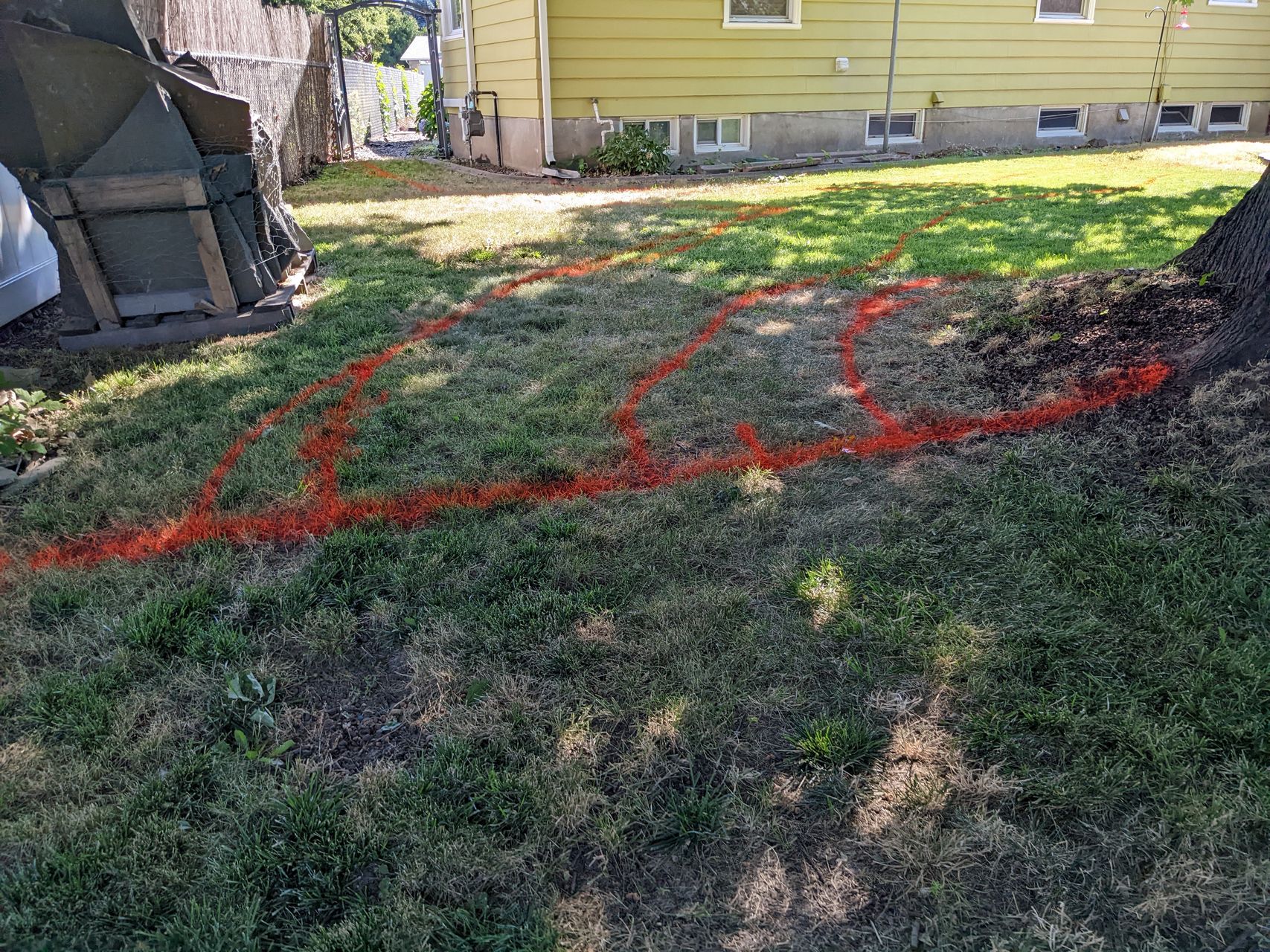
After our contractor removed the sod and put down a bare minimum of mulch, I ended up ordering more mulch, scraping up his mulch, and putting a layer of cardboard under it. I knew this project was coming for the last few years, so I've had a pandemic's worth of old boxes broken down in the garage. This should provide a biodegrable layer that will help keep weeds to a minimum. Punching a hole through the cardboard was supposed to be easy! I had done this with our last set of native plants in a landscaping bed.
Getting the plants
Okay, so we ordered all these plants, and then I have to go pick them up from an hour away. A friend was also working with Tapteal Natives, so we scheduled the same pickup time for our orders and I rented a small moving van. I was concerned that we were going to need a big box truck for some 70 plants of ours and 80 of theirs, but as many of the plants were in 4" containers or smaller 10cu plugs, a full sized pickup bed would have been enough for both of us. We brought a few boxes to help organize the smaller plants, and made unloading pretty quick.
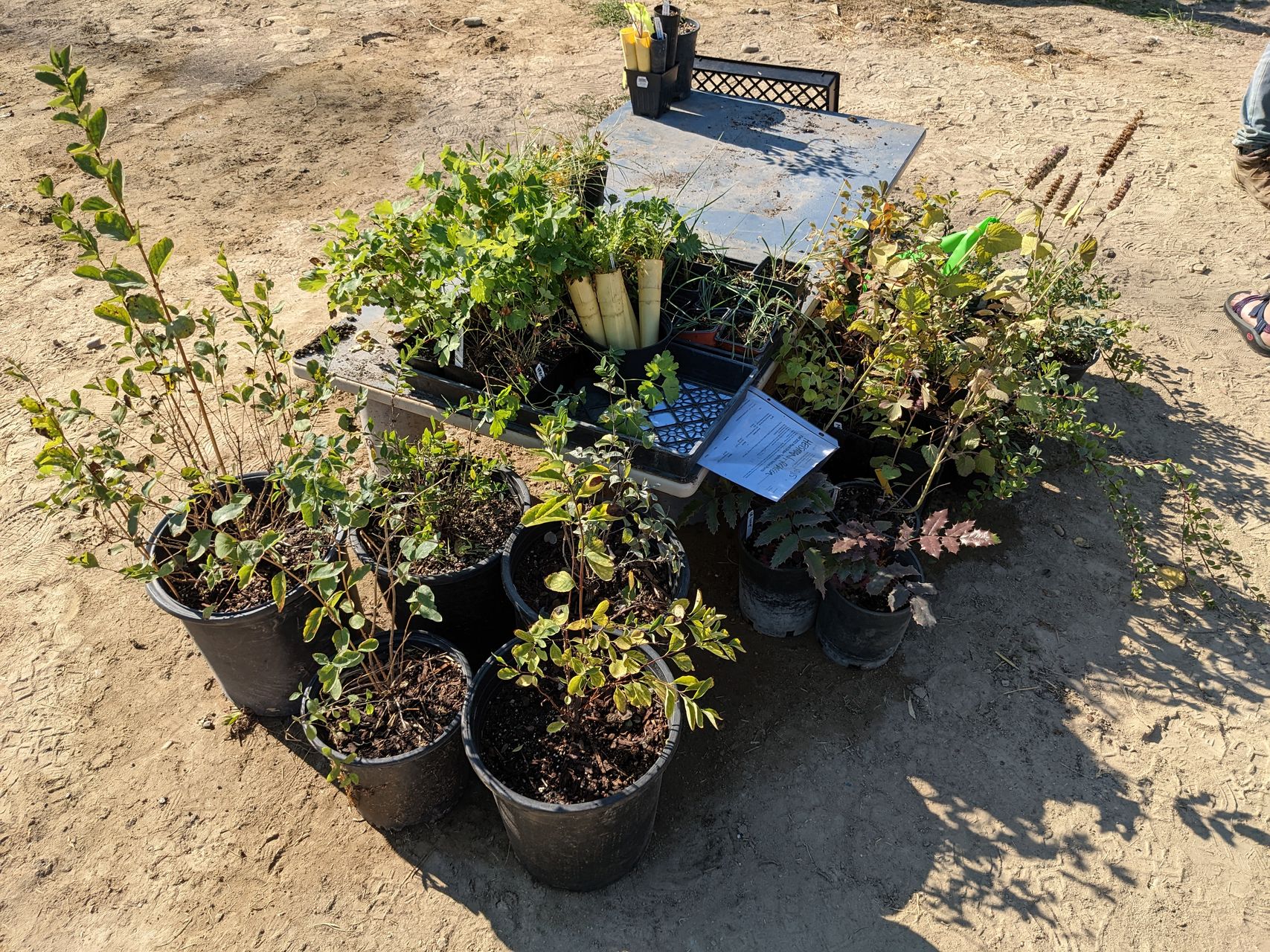 I should have taken a photo of transporting the plants, not just the group of them at pickup day!
I should have taken a photo of transporting the plants, not just the group of them at pickup day!
Planting
The 12 foot strip of native Palouse prairie plants that we planted in the front as an early COVID lockdown project had about 80 plants, but all in small plugs. This was a much larger operation with some 1-gallon and 5-gallon containers! Our property is on an alluival fan and clearly in one of the ancestral channels of Mill Creek, so digging more than a few inches down quickly gets to packed cobbles. I had known this from our previous plantings in the front yard, but was worse here as the sod had been removed! On top of that, I had to deal with all the roots from our grand old oak tree that is the centerpiece of the yard. After picking up the plants Saturday morning, it took me a couple of hours in the afternoon to get the first section planted, and much of Sunday to do the others.
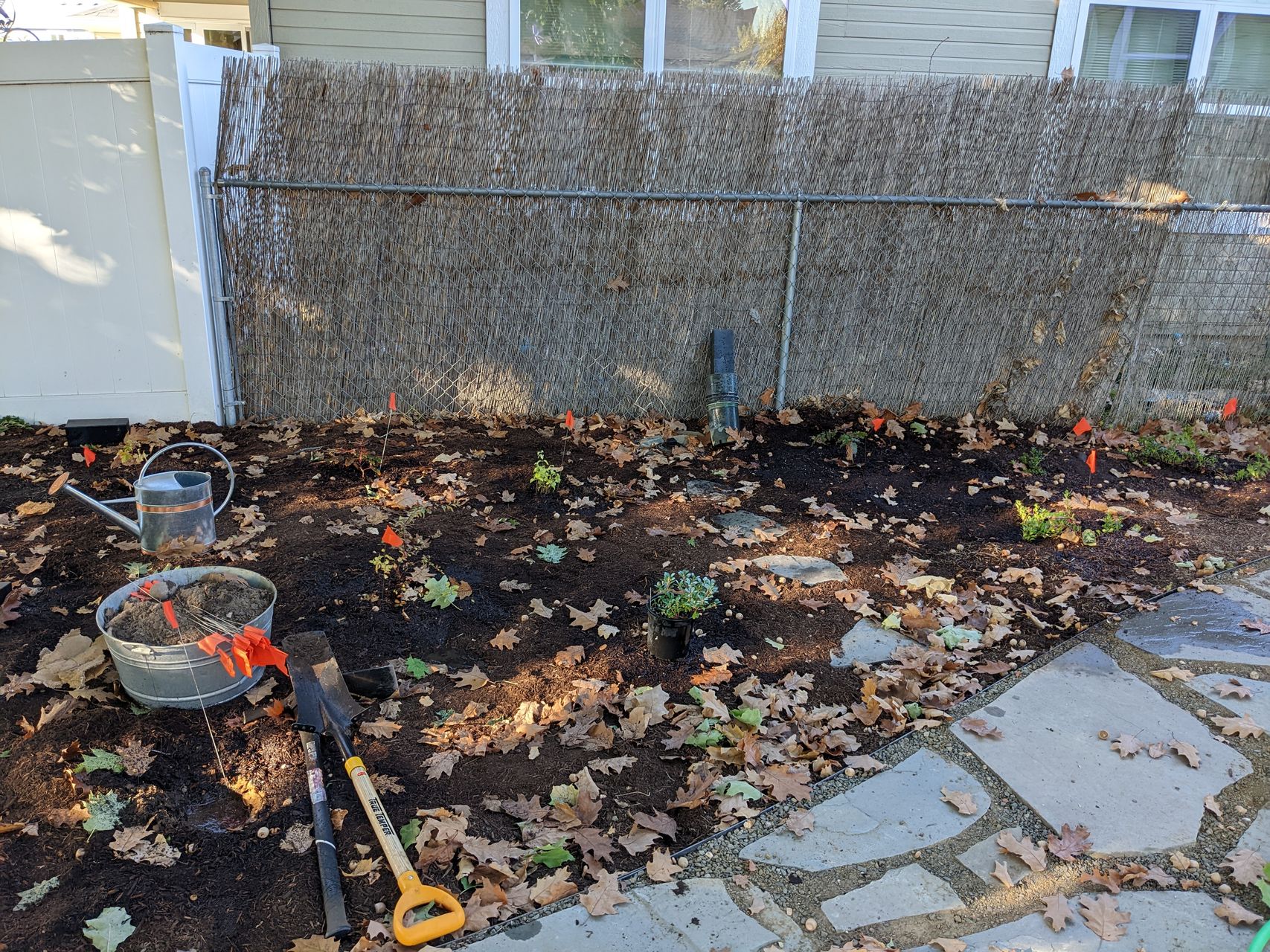 I marked each plant with a flag from the hardware store so that any that loose foliage over the winter are easy to locate next spring. Some of the plugs have only a few small leaves exposed above ground, so hopefully we won't lose any this way.
I marked each plant with a flag from the hardware store so that any that loose foliage over the winter are easy to locate next spring. Some of the plugs have only a few small leaves exposed above ground, so hopefully we won't lose any this way.
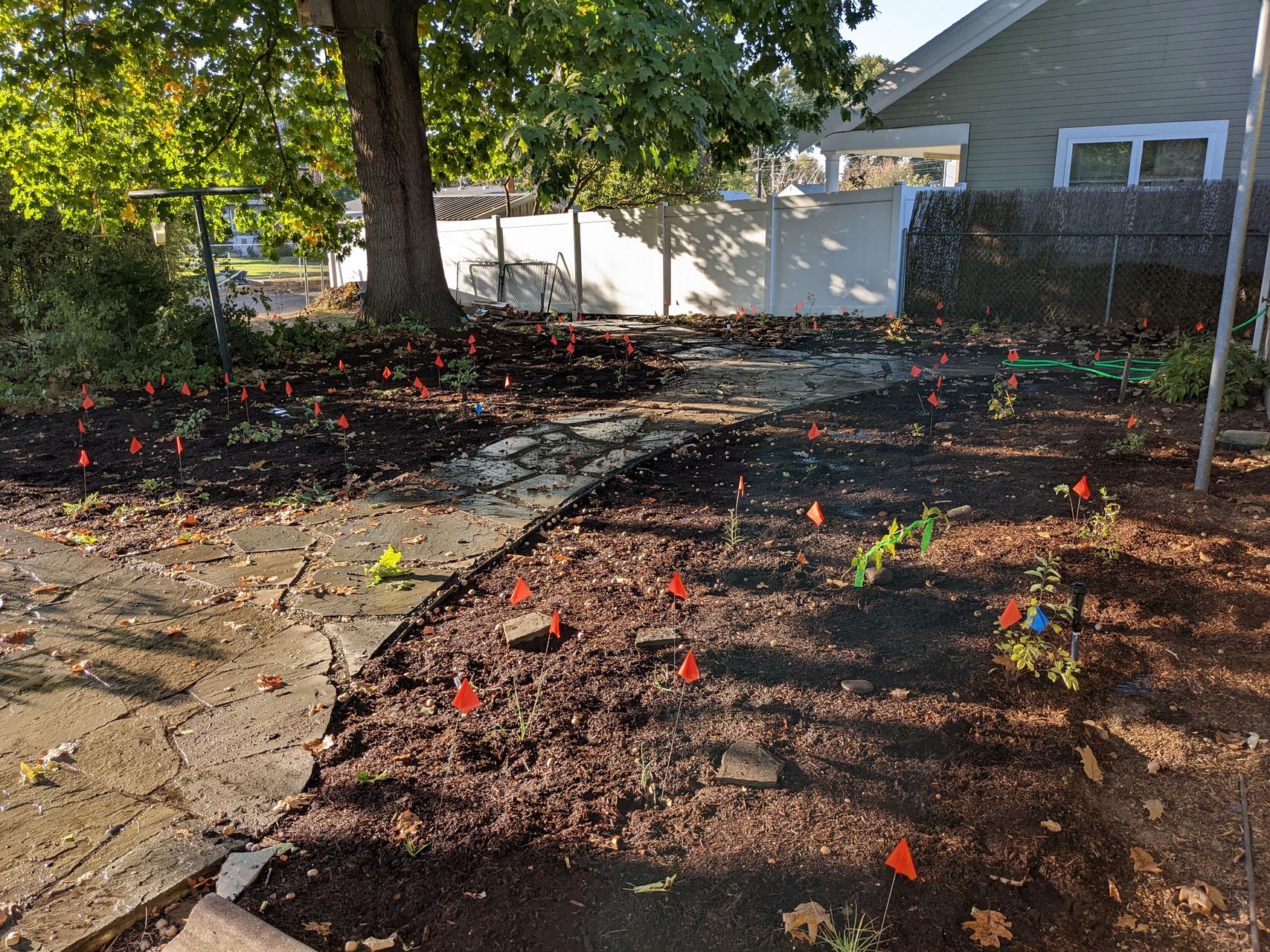
Resources
Many of our initial efforts were informed by plant lists and guides from the Audubon Society (for birds) and the Xerces Society (for pollinators). Audobon maintains a website that recommends plants to bring birds to your yard, based on your zip code, which was our starting point for our overall native plant project.
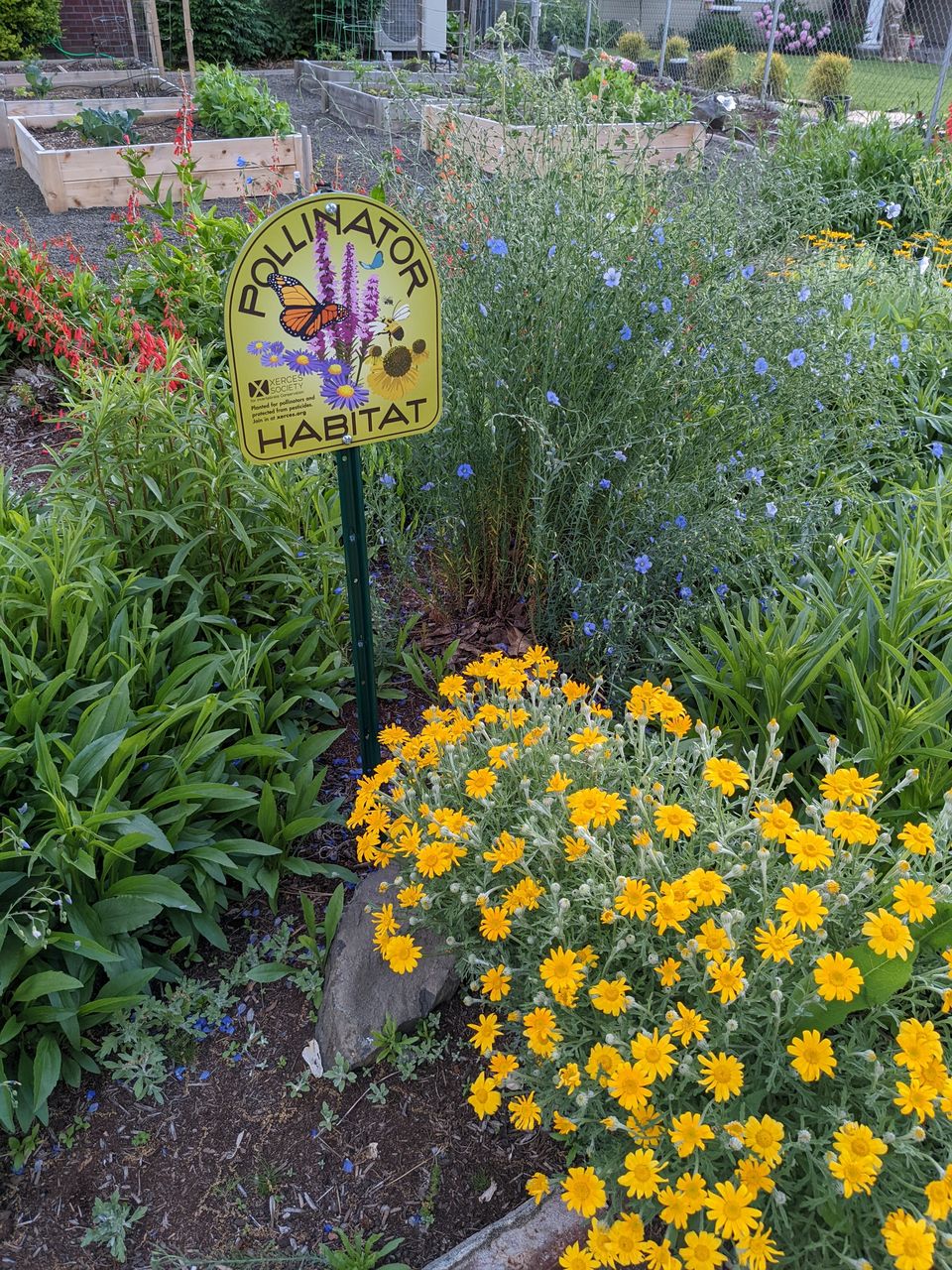 Our front yard in full bloom with a sign from the Xerces society proclaiming it as pollinator habitat. This front yard patch of natives brings all kinds of fun insects, including many different kinds of butterflies, bees, wasps, and tachinid flies.
Our front yard in full bloom with a sign from the Xerces society proclaiming it as pollinator habitat. This front yard patch of natives brings all kinds of fun insects, including many different kinds of butterflies, bees, wasps, and tachinid flies.
For those in the inland Northwest:
It's difficult finding varieties of native species that are for the inland northwest, as most native plant nurseries are region specific, and may only focus on wholesale plants for ecosystem restoration projects. If you're in the inland Colubmia valley or on the Palouse, a few places I'd recommend are:
-
Tapteal Native Plants (website | instagram), who provided the plants, planting plan, and advice for this project! I would highly recommend working with them!
-
Plants of the Wild (website), who primarily works with larger ecosystem restoration projects but sells to the public. We've done mail order with them (and at least one pickup order) to fill parts of our front yard with their Palouse Prarie pack and a few other plants from them. As a result, from March through November we have had a variety of native wildflowers adding color to our yard.
-
Columbia Basin Native Plant Society (website | facebook), based out of the Tri-cities area, occasionally runs plant sales, where we got a few sage and rabbitbrush plants.